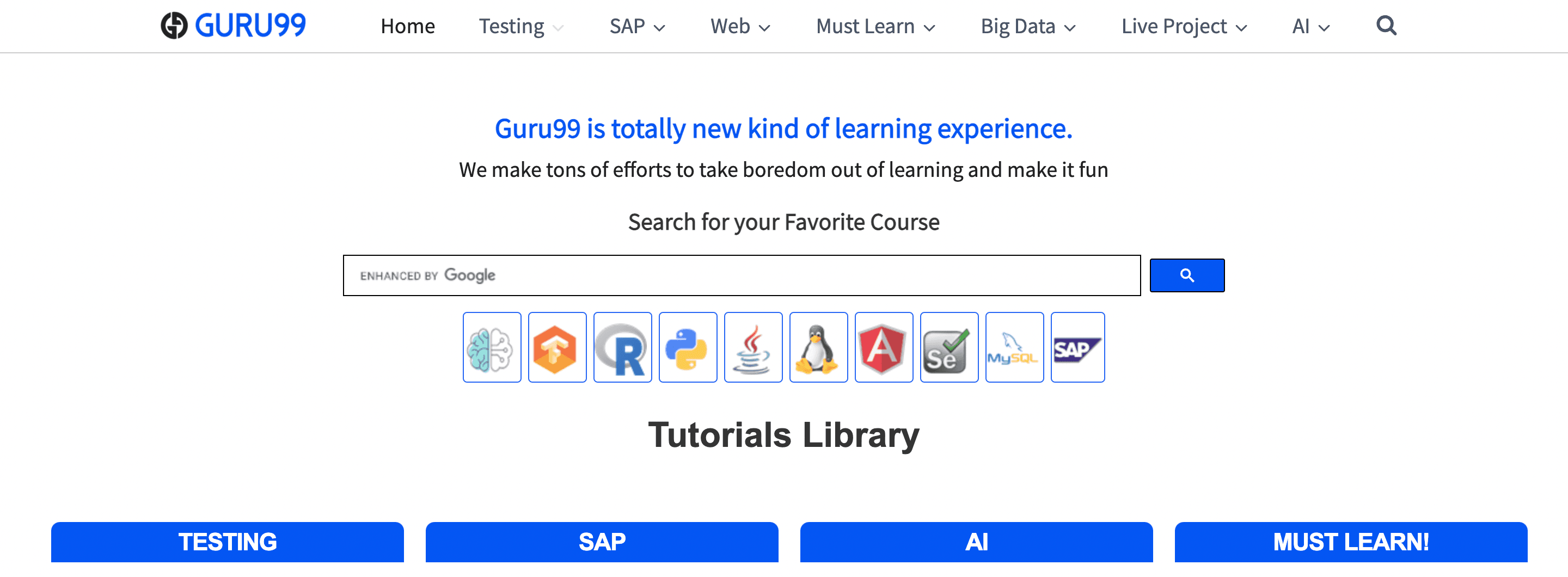Whether you are a QA professional or a developer looking to enhance your testing skills, practicing on real-world, bug-ridden websites can provide invaluable experience for app testing.
🤖 Summarize this article with AI:
💬 ChatGPT 🔍 Perplexity 💥 Claude 🐦 Grok 🔮 Google AI Mode
In this article, we will explore the significance of website testing, testing challenges, the role of bug testing in website development, and provide a curated list of websites with bugs for testing across various domains.

The Importance of Website Testing
Website testing is not just a technical formality; it's a critical process that directly impacts your website's functionality, UX, security, and overall success. By investing in thorough testing, you can ensure that your website operates flawlessly, delights users, and helps your business achieve its online goals.
💡 TIP
Whether you're launching a new website or maintaining an existing one, website testing should be an integral part of your web development process.
It's a proactive step that can save you time, money, and headaches in the long run, while also ensuring that your online presence remains competitive and reliable in a rapidly evolving digital landscape.
In the following steps, we will explain which sites will be perfect for practicing automation testing and finding bugs in software.
Automate your tests for free
Test easier than ever with BugBug test recorder. Faster than coding. Free forever.
Get started
1. Quality Assurance and User Experience
Software testing plays a pivotal role in Quality Assurance, serving as the cornerstone for ensuring that websites and applications not only meet but also exceed the expected standards of usability and functionality.
By meticulously identifying and rectifying bugs and glitches before a product's deployment, you pave the way for the creation of a seamless user experience that not only meets but also often exceeds user expectations.
This dedication to QA is not merely a technical endeavor but a commitment to customer satisfaction, as it directly influences the end user's perception of your brand, reliability, and competence. It can transform casual users into loyal customers, reinforcing your reputation for delivering excellence.
2. Accessibility and Compatibility
In today's diverse digital landscape, where a multitude of browsers, operating systems, and mobile devices coexist, websites must undergo rigorous compatibility and accessibility testing.
This comprehensive testing regimen ensures that your site is readily accessible to all users, regardless of their chosen platform, screen size, or assistive technology. By embracing the principles of universal design, you open the digital doors to a wider and more inclusive audience.
3. Security Vulnerabilities
In an era marked by increasing cyber threats and data breaches, website testing emerges as a paramount line of defense. Regular and meticulous testing serves as an essential element in identifying potential security vulnerabilities that could compromise sensitive user data.
💡 TIP
By actively seeking out weaknesses and vulnerabilities in your digital infrastructure, you engage in proactive risk management, guarding against the devastating consequences of data breaches.
In doing so, you protect not only your organization's reputation but, more critically, the trust and privacy of your users.
Effective security testing ensures that your users' information remains confidential, fostering an environment of trust and reliability that is essential for success in today's data-driven landscape.
The Role of Bug Testing in Website Development
1. Types of Bugs
Bugs and errors in software can manifest in various ways, including syntax errors, functional defects, button errors, and other user-interface issues. Automation testing helps identify and categorize these bugs, allowing developers to prioritize and address them effectively.
2. Test Scenarios
Creating comprehensive test scenarios and test cases is crucial to uncovering bugs in your website or application. These scenarios simulate real-world usage and interactions, helping you identify issues that may not be apparent in isolated testing.
3. Bug Reporting
Effective bug reporting is an integral part of the testing process. Detailed bug reports, including steps to reproduce, expected outcomes, and actual results, assist developers in quickly resolving issues.
Automate your tests for free
Test easier than ever with BugBug test recorder. Faster than coding. Free forever.
Get started
List of Websites with Bugs for Testing
To practice manual and automated testing, here is a curated list of test websites, that can be used to practice manual testing, cross-browser testing, UI testing, API testing, and usability testing:
1. Guru99

Website: guru99.com
Guru99 is one of the testing services that serves as an invaluable resource for developers seeking to enhance their skills and knowledge. Whether you are a novice looking to learn the fundamentals of software testing or an experienced professional seeking to expand your expertise, Guru99 offers a vast array of tutorials, guides, and educational materials to cater to all levels of proficiency.
One of the unique features that sets Guru99 apart is its deliberate inclusion of intentionally created bugs on websites. This hands-on approach allows users to search for bugs and gain practical experience in identifying, diagnosing, and rectifying common software issues, effectively turning them into adept problem solvers.
Guru99's extensive library of resources covers various aspects of software testing, quality assurance, and development, making it a one-stop destination for individuals and teams aiming to improve their skills and stay updated with industry best practices. With a commitment to excellence and a user-friendly interface, Guru99 empowers learners to excel in the field of software testing and development.
2. UTest

Website: utest.com
Through UTest, QA professionals can access a diverse range of applications to search and report bugs. This provides a practical environment to apply their skills, identify defects, and report their findings. By actively participating in these projects, you can not only enhance your testing skills but also contribute to the enhancement of software quality for a wide range of industries and applications.
UTest fosters a vibrant and collaborative community of testers, providing a platform for networking, learning, and career growth. It connects testers with organizations looking for their expertise, creating a win-win situation where testers gain valuable experience, and businesses benefit from improved software quality.
With its focus on real-world testing opportunities and a commitment to excellence, UTest is a vital resource for testers eager to advance their careers and make a tangible impact on the software industry.
3. GitHub - Bug Bounty Programs

Website: bounty.github.com/
GitHub, one of the largest platforms for open-source software development, hosts bug bounty programs for numerous open-source projects. These programs offer individuals the opportunity to actively engage in identifying and reporting security vulnerabilities in open-source software.
Participants can receive rewards for their contributions, making it a rewarding way to help improve the security of widely-used software.
4. Microsoft Bug Bounty

Website: microsoft.com/en-us/msrc/bounty
Microsoft Bug Bounty program invites security researchers and ethical hackers to discover and report security vulnerabilities, and error messages within Microsoft's products and services. T
hese include popular applications like Office and Windows. Participants in the Bug Bounty program can earn rewards for responsibly disclosing security flaws, ultimately helping Microsoft enhance the security of its software.
5. Stack Exchange

Website: stackexchange.com
Stack Exchange is a network of community-driven question-and-answer websites on various topics, including programming, technology, and software development. These platforms often have minor bugs and usability issues that can serve as excellent practice grounds for bug hunters.
Engaging in these platforms not only helps individuals improve their bug-finding skills but also assists in maintaining the quality and usability of the websites within the Stack Exchange network.
6. Healthcare Websites
Healthcare websites frequently deal with sensitive information and complex functionalities. Exploring different healthcare websites can help you identify bugs related to data security.
7. E-commerce Sites
Online shops often have a complex structure, including shopping carts, authentication processes, and payment gateways. It's especially helpful if you are in the e-commerce business and you want to learn how to find bugs on your website.
Buggy websites are all over the internet, so you can easily start to find bugs related to login functionalities, user-interface issues, etc. It's worth to also check them in popular browsers like Google Chrome, Safari, and Mozilla Firefox.
Automate your tests for free
Test easier than ever with BugBug test recorder. Faster than coding. Free forever.
Get started
How to Find Bugs on Your Website?
Effective website and mobile app testing is a crucial step in ensuring the quality and security of your applications. Bugs you find thanks to those websites can help you better prepare for the challenges of real-world testing scenarios.
Whether you are a manual tester or an automation engineer, honing your skills on these websites will make you a more proficient and valuable member of any development team. So, log in, start testing, and become a bug-hunting guru in the world of software quality assurance.
💡 TIP
If you want to start with codeless test automation, check out BugBug documentation and the best alternatives to popular tools like Selenium, Rainforest QA, and Cypress.
Happy (automated) testing!



